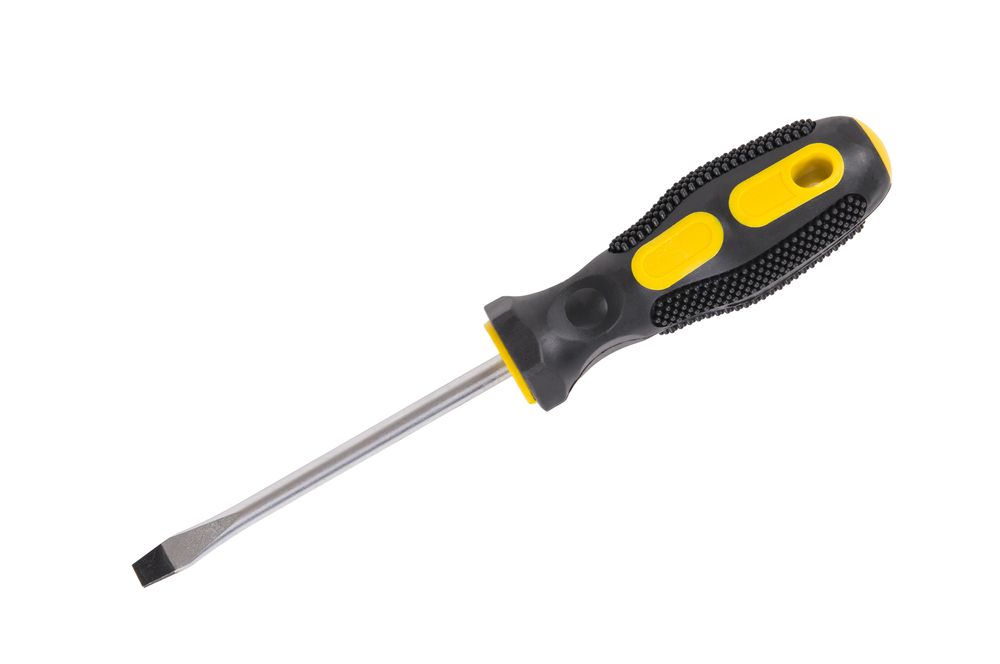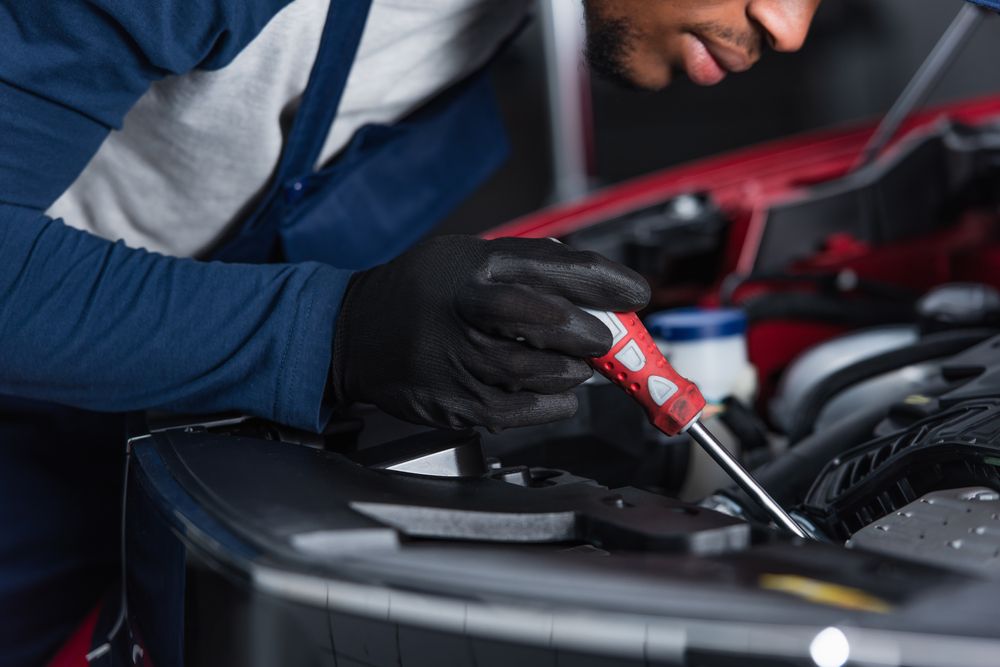A valuable skill for any vehicle owner to learn is how to test an
alternator with a screwdriver.
If your vehicle is having a hard time starting, has flickering or dim
headlights, or malfunctioning accessories, your car may have a bad
alternator.
The alternator is what converts the mechanical energy created by the
engine's rotation into electrical energy that runs the vehicle's electrical
systems.
To test an alternator with a screwdriver, simply place the screwdriver's
blade near the alternator's pulley while the vehicle is running. If the
alternator is functioning correctly, you will feel a magnetic pull on the
screwdriver; if you don't feel a magnetic pull, it's a sign that the
alternator is bad.
If you suspect a bad alternator, you must get it fixed as soon as possible
because it's very likely that shortly it will leave you stranded.
Read below to learn more on how to test an alternator with nothing but a
screwdriver and other tricks to troubleshoot an alternator.
 A screwdriver can be used to test a car alternator.
A screwdriver can be used to test a car alternator.
How Do You Know If You Have A Bad Alternator With A Screwdriver?
Suppose you suspect that the alternator in your vehicle is starting to fail
or has completely failed. In that case, there are some tests you can
perform that will help you determine if the alternator is working or not,
including the screwdriver test.
A properly functioning alternator creates a voltage due to Farraday's Law.
Put simply, Farraday's Law says that a voltage will be created when a
magnetic field changes. The alternator accomplishes this by rotating the
alternator rotor (magnetic field) within a stator.
If an alternator is not functioning properly, one of the symptoms may be
that its magnetic field is weak or non-existent. We can test this with a
screwdriver. The steps to test an alternator with a screwdriver are:
1. Open The Vehicle's Hood And Locate The Alternator
If you are unsure where the alternator is in your vehicle's engine
compartment of your car, it's probably a good idea to find the alternator
and alternator pulley before the engine is turned on.
2. Turn On The Vehicle
Start the vehicle. If the alternator is not working properly, you may have
to jump-start your battery. When jump-starting your vehicle, follow the
procedure as laid out in the owner's manual.
3. Place Metal Tip Of Screwdriver Close To The Alternator Pulley
With the vehicle running, place the end of the screwdriver near the
alternator's pulley, taking care not to touch or get your arm caught in a
fan blade or serpentine belt.
If the alternator is functioning properly, you will feel a force pulling
the screwdriver towards the alternator pulley.
 Mechanic testing an alternator with a screwdriver.
Mechanic testing an alternator with a screwdriver.
How Can I Test My Alternator Without A Tester?
The best way to test an alternator is with a multimeter. A multimeter will
allow you to perform a suite of tests on the different components of the
alternator that you simply can't perform without a tester.
A good code scanner will also pull trouble codes related to your alternator
that may help you troubleshoot the problem.
How Do I Know If My Alternator Is Bad Without A Multimeter?
The best way to test an alternator is with a multimeter, but there are a
few tests you can perform without a multimeter that may help narrow your
charging system problem down to your alternator, including the screwdriver
test mentioned above, as well as by disconnecting the negative battery
cable while the vehicle is running.
Can I Test My Alternator By Disconnecting The Battery?
To
test your alternator by disconnecting the battery
, simply disconnect the cable from the negative battery terminal while the
vehicle is running. Then, if the vehicle continues to run, it means the
vehicle's alternator is still good.
Caution:
You risk damaging a vehicle's electrical system by disconnecting the
battery with the engine running.
Symptoms Of A Faulty Alternator?
Symptoms of a faulty or malfunctioning alternator include:
-
Dead or weak battery: a low battery voltage results when the
alternator's voltage output is low and is one of the most common
symptoms of a faulty alternator.
-
Malfunctioning or wonky accessories: things like dashboard lights and
the vehicle's radio may act funny or not work at all.
-
Dim or flickering headlights: if the car's battery is low due to a bad
alternator, there
won't be enough battery voltage to properly power the vehicle's
headlights
.
-
Whining or grinding noises: if the alternator fails due to a bad
alternator pulley, you may hear strange grinding noises coming from the
alternator.
-
Battery warning light: the battery light on your dashboard may light
when your vehicle's battery voltage drops below its operating level due
to a bad alternator.
-
Burning rubber or plastic smell: a burning plastic smell indicates a
short somewhere in the vehicle's electrical system.
-
Check engine light on dash: a problem like a malfunctioning voltage
regulator will trigger the check engine light on your vehicle's
dashboard.
Conclusion
Put your car key inside the ignition switch, turn the key, and nothing? You
could have a dead battery caused by a failing alternator. Luckily, there
are some tests you can do to troubleshoot your alternator.
The first thing to check is to ensure the cables connected to the battery
terminals aren't loose or corroded, and there aren't any obviously damaged
wires under the car hood.
Next, with the car's engine running, place the tip of a screwdriver near
the alternator while taking care not to touch the rotating engine fan or
serpentine belts. If you feel a magnetic pull coming from the alternator,
it signifies that your alternator is still working.
However, the best way to test an alternator is with a multimeter. A
multimeter will allow you to check the voltage of your battery and
different components of the alternator to dial in exactly where the problem
is.